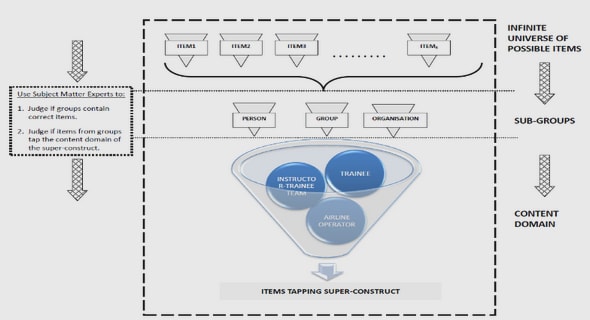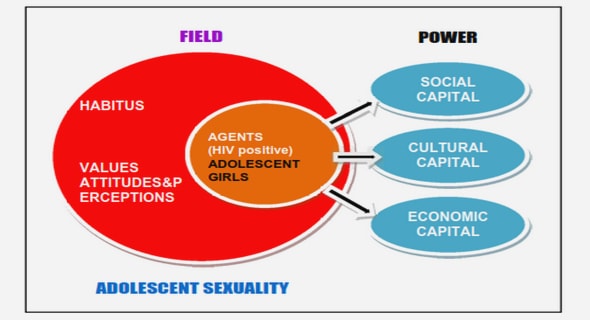Get Complete Project Material File(s) Now! »
GENERAL INTRODUCTION
Livestock production and anthropogenic methane emissions With a significant increase in human population which is expected to double from 2005 to 2050 (Steinfeld et al., 2006), the demand for increased production of meat and milk among other food sources are becoming increasingly high. Ruminants are capable of utilizing feeds with high fibre content, generally less nutritious and not easily digested by monogastrics to produce meat, milk and various fibre products. Thus, they occupy a significant ecological niche for meeting global demand for high quality and nutritious food (Bayat and Shingfield, 2012). However, ruminants have both local (nitrogen and phosphorus pollution) and global (greenhouse gas emission) footprints (Gerber et al., 2013; Pelletier et al., 2010). Greenhouse gas (GHG) emissions have risen worldwide since the beginning of industrialization as a result of human induced activities-anthropogenic factors (Vijaya Venkata Raman et al., 2012). Carbon dioxide (CO2; 77%) is the major GHG, mainly from energy and land-use activities, followed by methane (CH4; 14%) and nitrous oxide (N2O; 8%) mainly from livestock production and waste management (Hristov et al., 2013; Montes et al., 2013a). Emissions from agriculture account for about 14-15% of global GHG, evenly shared between CH4 and N2O (45% each; rest CO2) (Dong et al., 2006; Lassey et al., 1997). The largest agricultural source of GHG emissions are from soil management activities, mainly tillage and cropping practices (Staerfl et al., 2010) while the second largest source is livestock husbandry, where CH4 is emitted during enteric fermentation in the rumen and through storage of manure (Steinfeld et al., 2006). One other important agricultural source of GHG (CH4) includes rice paddy fields (IPCC, 2006).
Overview of rumen ecology
The digestive system of ruminants is characterized by a functional and anatomical adaptation that allows them to digest fibrous feeds and other complex carbohydrates otherwise indigestible by monogastrics. This advantage is conferred by the occurrence of a microbial fermentation process in the rumen prior to gastric and intestinal digestion (Niwinska, 2013). The rumen, which plays a significant role in the digestive system of ruminant animals has been described as an anaerobic fermentation chamber with a large diversity and dense microbial population living symbiotically with one another (Wolin et al., 1997). The microbial environment is noted for being a stable, but dynamic environment well established in performing the function of bio-conversion of feed into volatile fatty acids (Kamra, 2005). Fermentation of carbohydrate and protein results in intermediate products such as simple sugars and amino acids, which are utilized by the rumen microbes to produce microbial biomass, volatile fatty acids (VFA), ammonia nitrogen, carbon dioxide and methane. The primary VFAs produced by the rumen microbes include acetate, propionate and butyrate and to lesser extent the branched chain VFAs (valerate, isobutyrate, isovalerate) and lactic acid. These fatty acids are absorbed through the rumen walls, while microbial biomass and feed residues flowing to the abomasum provide a source of protein, vitamins and lipids to the animal (Niwinska, 2013). The rate and extent of this fermentation determines the availability of protein, vitamins and VFA supply to the animal and ultimately its productivity in terms of growth, meat and milk production.
Rumen hydrogen metabolism
The anaerobic fibrolytic microbes in the rumen produce CO2, H2, and VFAs (Mitsumori and Sun, 2008). Following continuous carbohydrate digestion, there is an accumulation of H2, the removal of which allows the rumen microbes to function optimally, supporting the continuous degradation of feed dry matter (Hook et al., 2010; Sharp et al., 1998). The removal of hydrogen from the rumen environment, chiefly by methanogens, can therefore be termed a rate-determining step of carbohydrate fermentation. According to Wolin et al. (1997), methanogenesis is the major hydrogen consuming pathways among several other pathways already identified in the rumen as shown in Fig.
Ionophores
The most popular ionphore is monensin, which is often added to the diet of feedlot animals to control bloat, improve feed efficiency and improve feed intake (Beauchemin and Mcginn, 2001). Research has shown monensin to reduce methane emission in beef cattle feedlot by between 7.5% and 25% in feedlot beef and dairy cattle, respectively (Gerber et al., 2013; Goodrich et al., 1984; Hristov et al., 2013) although its effectiveness is not persistent over a long term (Johnson and Johnson, 1995). There is a restriction on the use of antibiotics as a dietary supplement in animals across the European Union. Because monensin is a polyether ionophore antibiotic, its continued use in animal production systems remains controversial due to food safety concerns (Gerber et al., 2013).
Declaration
Dedication
ABSTRACT
CHAPTER ONE Literature Review
1.1 Overview of rumen ecology
1.2 Rumen carbohydrate fermentation and methane production
1.3 Diet characteristics and methane production
1.4 Rumen hydrogen metabolism
1.5 Animal-derived methane mitigation strategies
1.5.1 Bacteriocins and bacteriophages
1.5.2 Ionophores
1.5.3 Organic acids
1.5.4 Sulphate
1.5.5 Dietary lipids/fatty acids
1.5.6 Dietary nitrate
1.5.7 Phytochemicals (plant secondary compounds)
1.5.8 Condensed tannins
1.6 Conclusions
1.7 Objective of the study
1.7.1 General objective of the study
1.7.2 Specific objectives of the study
1.8 Justification of the study
CHAPTER TWO In vitro methane production of Eragrostis hay treated with graded levels of urea or nitrate Abstract
2.1 Introduction
2.2 Materials and Methods
Feed treatment and experimental design
In vitro fermentation
In vitro organic matter digestibility
Methane production measurement
Chemical composition analysis
Calculations and statistical analysis
2.3 Results
2.4 Discussion
2.5 Conclusion
CHAPTER THREE Effect of supplementing or treating Eragrostis curvula hay with urea or nitrate on its digestibility and in vitro fermentation
Abstract
3.1 Introduction
3.2 Materials and Methods
3.3 Results
3.4 Discussion
3.5 Conclusion
CHAPTER FOUR Effect of non-protein nitrogen source and inclusion of condensed tannin on nutrient digestibility, growth performance and methane production in sheep
Abstract
4.1 Introduction
4.2 Materials and Methods
Animal, experimental design and adaptation
Diets and feeding
Nutrient digestibility, nitrogen balance and Rumen Fluid sampling
Rumen Fluid sampling
Methane emission measurement
Chemical analysis
Statistical analysis
4.3 Results
4.4 Discussion
4.5 Conclusions:
CHAPTER FIVE Effect of different non-protein nitrogen sources and tannin supplementation on haematolog and serum biochemical traits in growing merino lambs
Abstract
5.1 Introduction
5.2 Materials and methods
Animal, experimental design and adaptation
Blood sampling and analysis
Statistical analysis
5.3 Result
5.4 Discussion
5.5 Conclusions
CHAPTER SIX Characterization of starch and maltodextrin microparticles encapsulating Acacia tanning extract and evaluation of their potential for use in ruminant nutrition
Abstract
6.1 Introduction
6.2 Materials and Method
Materials
Properties of acacia tannin extract
Microparticles preparation
Spectrophotometric procedure
Surface tannin content
Total tannin content
Determination of core loading and encapsulation efficiency
Morphological analysis of microparticles using scanning electron microscopy
In vitro release kinetics of encapsulated Acacia tannin from microparticles
In vitro gas production
Statistical analysis
6.3 Results
Characterization of encapsulated Acacia tannin microparticles
Yield and encapsulation efficiency of microparticles
In vitro release of Acacia tannin from microparticles in dissolution media
Effect of ATE encapsulated with starch or maltodextrin-gum Arabic on in vitro ruminal
gas production and methane emission
6.4 Discussion
6.5 Conclusion
CHAPTER SEVEN Preparation of tannin lipid-microparticles by solid-in-oil-in-water and melt dispersion methods: characterization and evaluation of their effect on ruminal gas production in vitro
Abstract
7.1 Introduction
7.2 Materials and Method
Materials
Microparticle Preparation
Microparticle morphology and size determination
Determination of tannin yield and encapsulation efficiency of microparticles
In vitro release of tannin from microparticles
In vitro gas production
Statistical analysis
7.3 Results Characterization of microparticles
In vitro release behaviour of ATE-encapsulating lipid microparticles
In vitro fermentation, total gas production and methane emission of Eragrostis hay and a
total mixed ration as influenced by lipid-encapsulated Acacia tannin extract
7.4 Discussion
7.5 Conclusion
CHAPTER EIGHT Effect of lipid-encapsulated tannin on feed intake, nutrient digestibility, nitrogen balance and methane emission in sheep
Abstract
8.1 Introduction
8.2 Materials and Methods
Micro-encapsulation of Acacia mearnsii tannin extract
Animals, diets, and experimental design
Apparent digestibility and N-balance measurment
Open circuit respiratory chamber
Methane emission measurement
Chemical analyses
Statistical analyses
8.3 Results
8.4 Discussion
8.5 Conclusion
CHAPTER NINE General conclusion, recommendation and critical evaluation
Conclusions and recommendations
Critical evaluation of research
REFERENCES
GET THE COMPLETE PROJECT
The use of condensed tannins and nitrate to reduce enteric methane emission and enhance utilization of high forage diets in sheep


